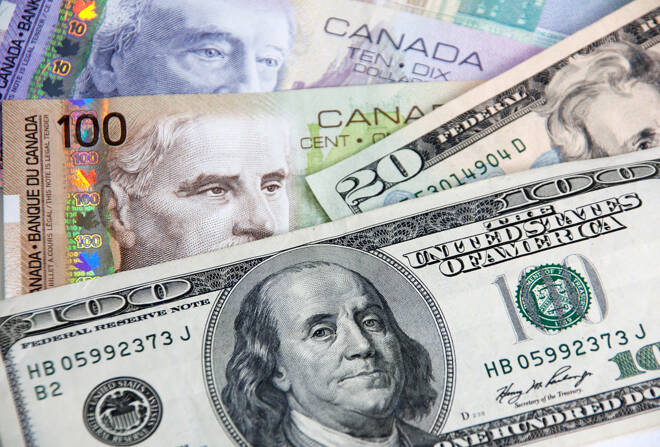Advertisement
Advertisement
USD/CAD: Loonie Weakens Ahead of Jackson Hole Summit; Markets Remain on Edge
By:
The Canadian dollar weakened against its U.S. counterpart on Thursday ahead of the Jackson Hole symposium, where Federal Reserve chair Jerome Powell may shed some light on how the Fed intends to reduce economic stimulus.
The Canadian dollar weakened against its U.S. counterpart on Thursday ahead of the Jackson Hole symposium, where Federal Reserve chair Jerome Powell may shed some light on how the Fed intends to reduce economic stimulus.
The USD/CAD pair rose to 1.2653 today, up from Wednesday’s close of 1.2589. The Canadian dollar lost about 1% in July – the second biggest monthly decline since September 2020 – and has further dropped about 1.3% this month.
“The risk rally has lost some steam as Fed Chair Powell’s speech tomorrow at Jackson Hole draws closer. We could see the dollar find some support into the risk event, but a wait-and-see approach may dominate price action today,” noted Francesco Pesole, FX Strategist at ING.
The dollar index, which measures the value of the dollar against six foreign currencies, was trading 0.15% higher at 92.966. Earlier in the session, a regional Federal Reserve president suggested that the central bank reduce asset purchases faster, pushing the dollar higher.
Investors are eagerly awaiting news about the Federal Reserve’s economic support taper. Speculators are divided over whether or not Powell will tone down the Fed’s hawkish language and unveil a timeline for trimming its bond-buying program in his Friday’s speech at the Jackson Hole symposium.
According to the Fed minutes, if the economy continues to improve as expected, the Fed may reduce the bond-buying stimulus this year. That means the Fed will not flood the financial system with cash if they reduce debt purchases. This is typically positive for the dollar.
It is likely that the world’s dominant reserve currency, the USD, will rise over the coming year, largely due to the expectation of two rate hikes by the Fed in 2023. With the dollar strengthening and a possibility that the Federal Reserve will raise interest rates earlier than expected, the USD/CAD pair may experience a rise.
“Our base case remains for another tapering in October, with net-zero purchases by year-end and BoC to commence rate hikes in H2 2022 but potentially earlier if labour market slack is absorbed sooner. We remain bullish on oil (a key export by Canada) with a base case for Brent to trade in a $75-80 range in 2H’21,” noted analysts at Citi.
“This leaves the overall backdrop well supportive for CAD. However, the near-term tactical outlook for CAD remains biased towards further weakness vs USD. USDCAD is currently not too far away from the Jul 2021 high at 1.2807, which is the last level of resistance prior to the pivotal resistance range at 1.2952- 57, which consists of Dec 2019 low and the Dec 2020 high.”
On the other hand, Canada is the world’s fourth-largest exporter of oil, which edge lower as a rapid spread of the Delta variant of Coronavirus in multiple parts of the world raised concerns about the global fuel demand.
U.S. West Texas Intermediate (WTI) crude futures were trading 1.11% lower at $67.6 a barrel. Lower oil prices lead to lower U.S. dollar earnings for Canadian exporters, resulting in a decreased value of the loonie.
Global demand for crude oils is declining due to recent restrictions over the Covid-19 Delta variant and a lack of buyers. The slowing Chinese economy dampened sentiment and have knocked investors off balance. As a major exporter of commodities, including oil, Canada’s dollar tends to be sensitive to the outlook for global economic growth.
About the Author
Vivek Kumarauthor
Vivek has over five years of experience in working for the financial market as a strategist and economist.
Did you find this article useful?
Latest news and analysis
Advertisement
